Designing a Bank Dashboard
I'm excited to showcase a project that I recently completed for NiceBank. As a designer, I believe in creating digital experiences that are not only aesthetically pleasing but also practical and functional. With that in mind, I designed a bank dashboard that caters to both the needs of the clients and the administrative staff.
The dashboard is a modern, user-friendly interface that provides clients with easy access to their account information, transaction history, and other features. The admin section is designed to streamline the bank's internal processes, allowing staff to manage accounts, monitor transactions, and perform other essential tasks.
Although I didn't do a case study at first, I approached the project with a focus on user experience, incorporating best practices and design principles to ensure that the dashboard is intuitive and easy to use. I'm proud of the final product, and I hope that it will demonstrate my skills as a designer and my ability to create practical solutions that meet the needs of both users and businesses.
Ready? Let's go!😋
Ensuring a seamless login experience is essential for user retention. That's why I've designed user authentication flows that prioritize simplicity and ease of use.
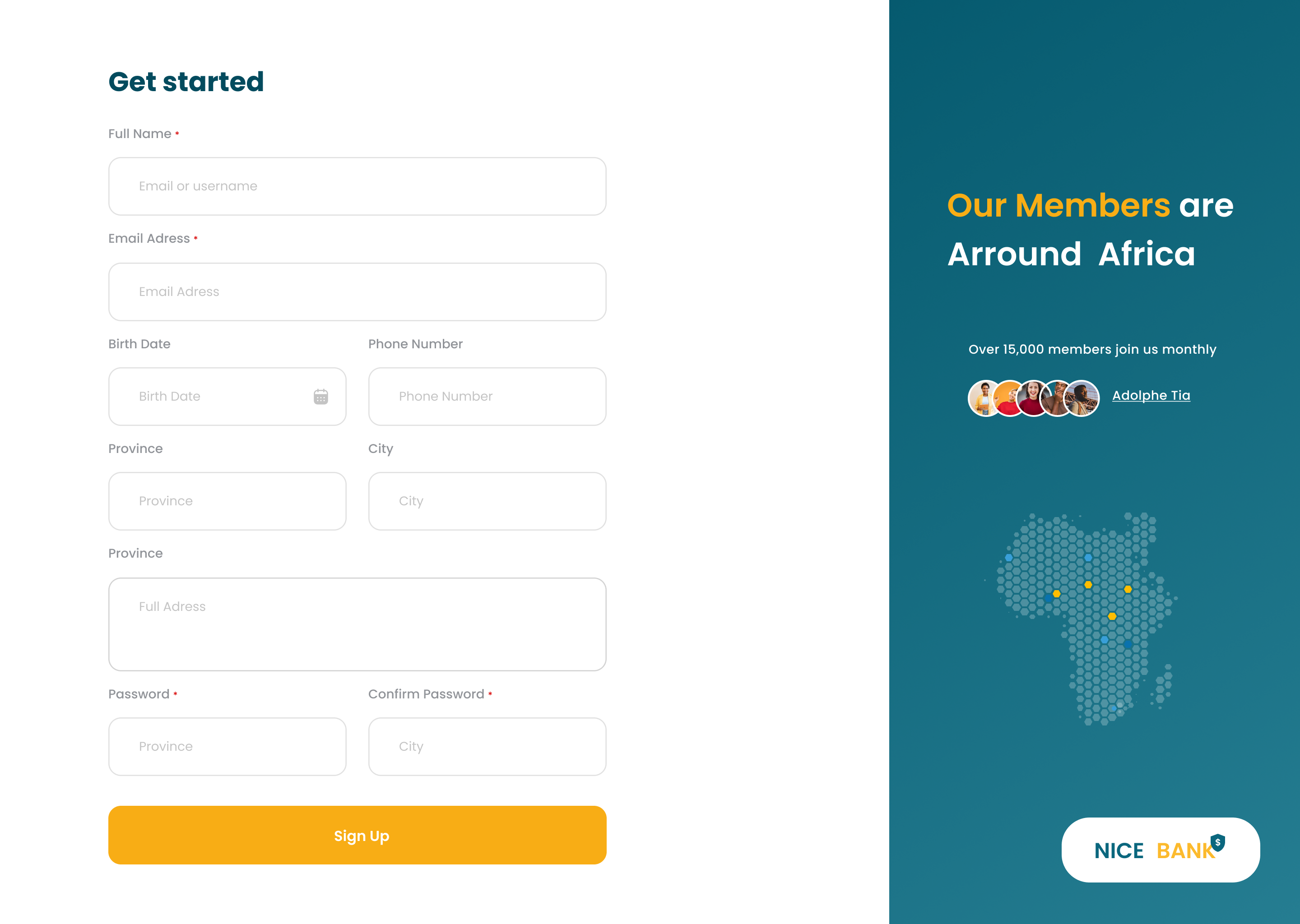

Ready to access admin-only features? Check out my secure admin login design.

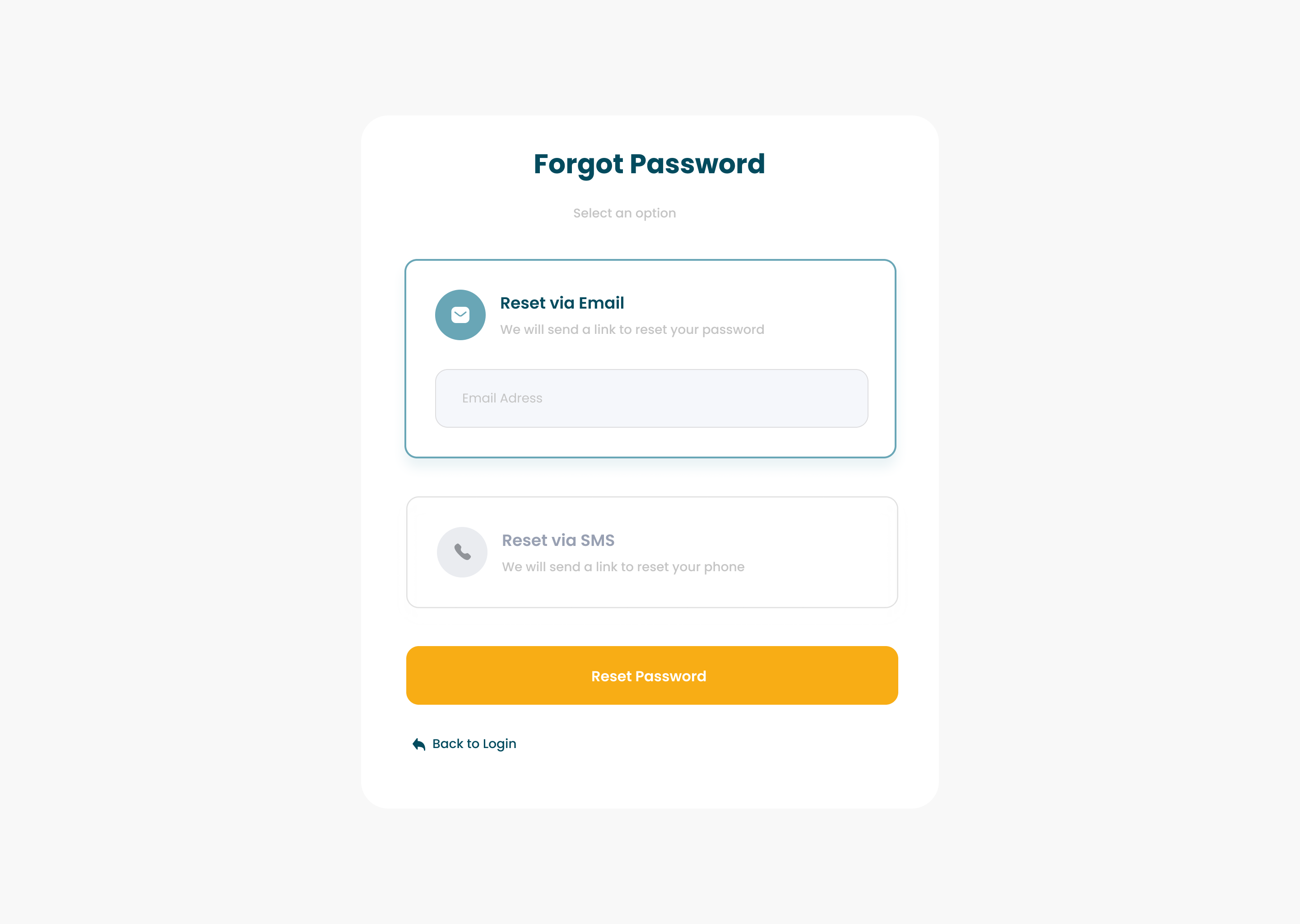
The bank dashboard I designed aims to provide a user-friendly interface for managing bank accounts and transactions. The dashboard includes customizable cards that display key account information, allowing users to quickly view their balances, recent transactions, and other relevant data. Additionally, the dashboard features an easy-to-use interface for adding new accounts and managing account details such as account holders, transaction history, and security settings.

The user edit profile page is a central location where users can manage their account information and make changes as needed. The page is designed to be intuitive and user-friendly, with clear labels and easy-to-use navigation. The first section of the edit profile page allows users to update their personal information such as name, email address, and phone number. Users can simply edit the fields and click save to update their information. The next section allows users to change their password. This section typically requires the user to input their current password and then create a new one. This is an important security feature that helps protect the user's account from unauthorized access.
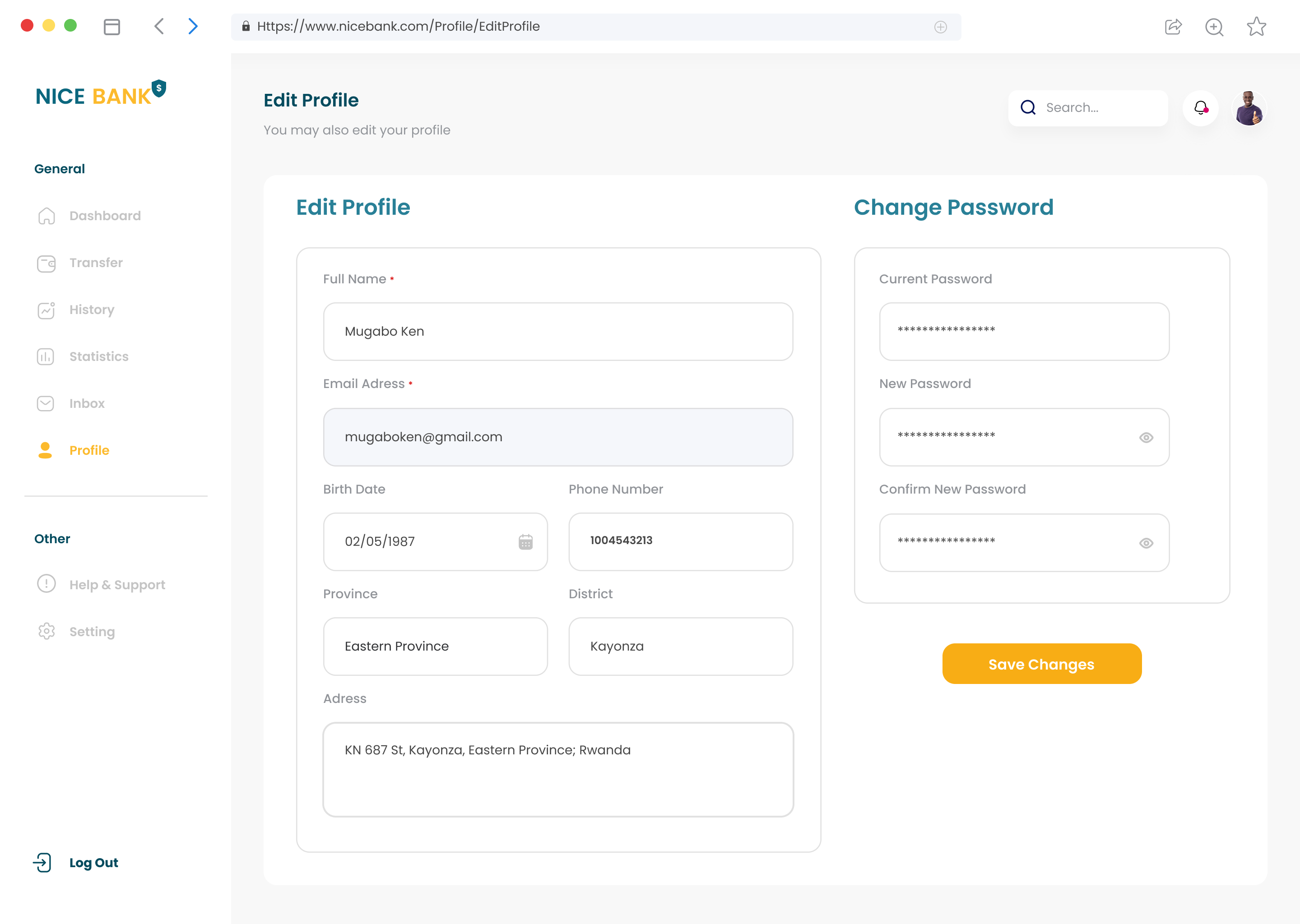
The user transfer balance feature is a crucial component of any digital payment platform that allows users to transfer money between accounts. This feature is designed to be user-friendly and secure, with clear steps and options for managing the transfer process. To initiate a transfer, the user typically begins by selecting the desired transfer amount and the account to which the money will be sent. The user can then review a transfer summary, which includes important details such as the transfer amount, the recipient's account information, and any fees associated with the transfer. The user transfer balance feature may also include a feature that suggests friends that the user most likely wants to send money to. This feature may analyze the user's past transfer history or their contacts to identify potential recipients.
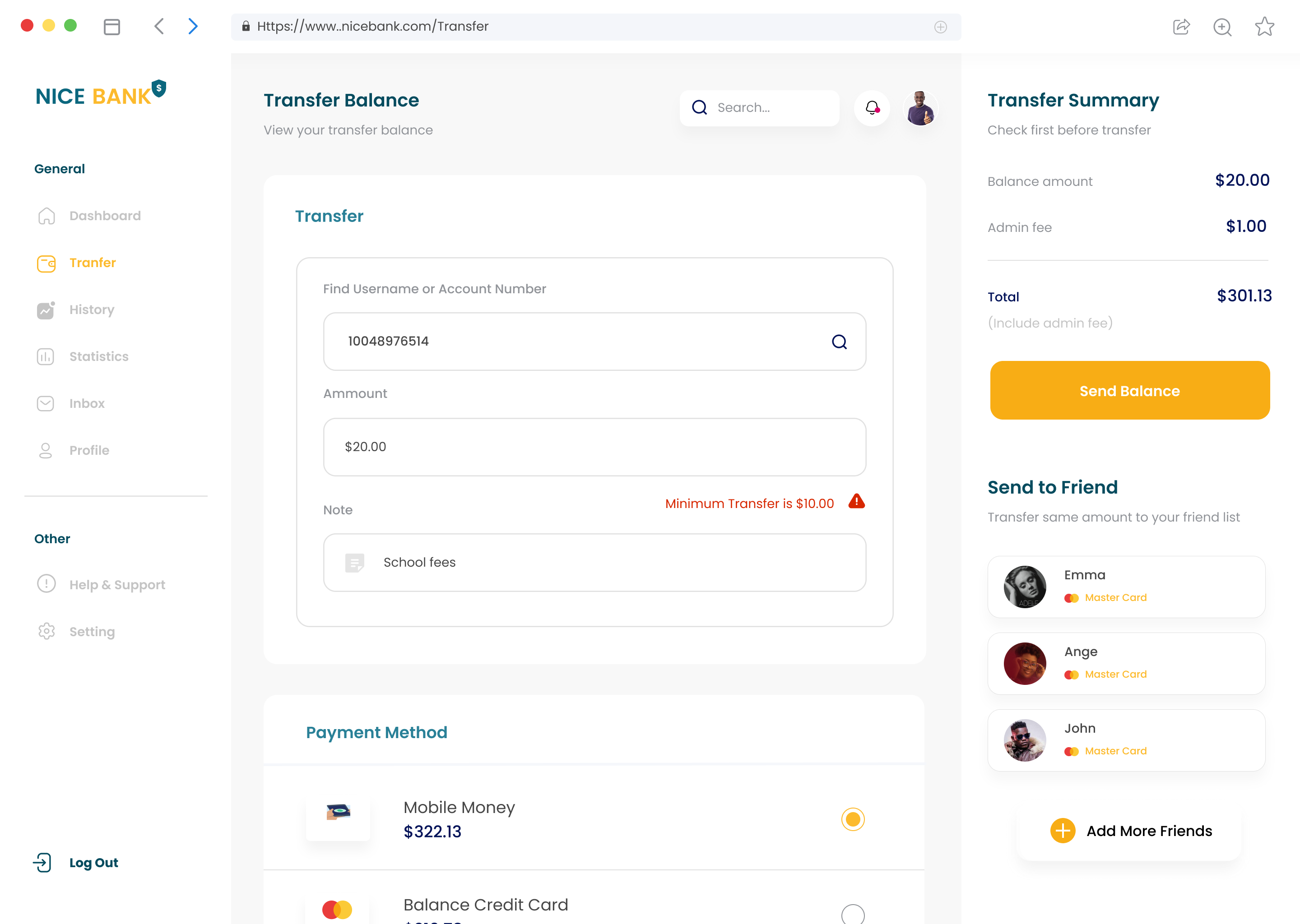
The transfer history typically displays a record of all the transfers that the user has initiated or received. This includes the date and time of the transfer, the transfer amount, the sender or recipient's account information, and any associated fees. The user can also search or filter the transfer history based on various criteria such as transfer date, transfer type, and transfer status. The payment history feature is similar to the transfer history, but it focuses on payments made or received by the user. This includes any bill payments or other transactions that the user has completed using the payment platform. The recent activities section of the transfer history typically provides users with an overview of their account activity in real-time. This might include notifications for new transactions, payments, or transfers.

The admin dashboard history is a feature that provides administrators with a record of all transactions that occur within the payment platform. This includes both user-to-user transfers and bank-to-user transfers, as well as any fees associated with these transactions. The user-to-user transfers section of the admin dashboard history displays a record of all transfers that occur between users within the payment platform. This includes the date and time of the transfer, the transfer amount, the sender and recipient's account information, and any associated fees. The user-to-user transfers section may also allow administrators to view a detailed breakdown of transfer activity by user, including the number of transfers initiated and the total transfer amount. The bank-to-user transfers section of the admin dashboard history displays a record of all transfers that occur between the payment platform and external bank accounts. This includes the date and time of the transfer, the transfer amount, the sender and recipient's account information, and any associated fees. The bank-to-user transfers section may also provide administrators with a breakdown of transfer activity by bank account, allowing them to track which accounts are receiving the most funds.
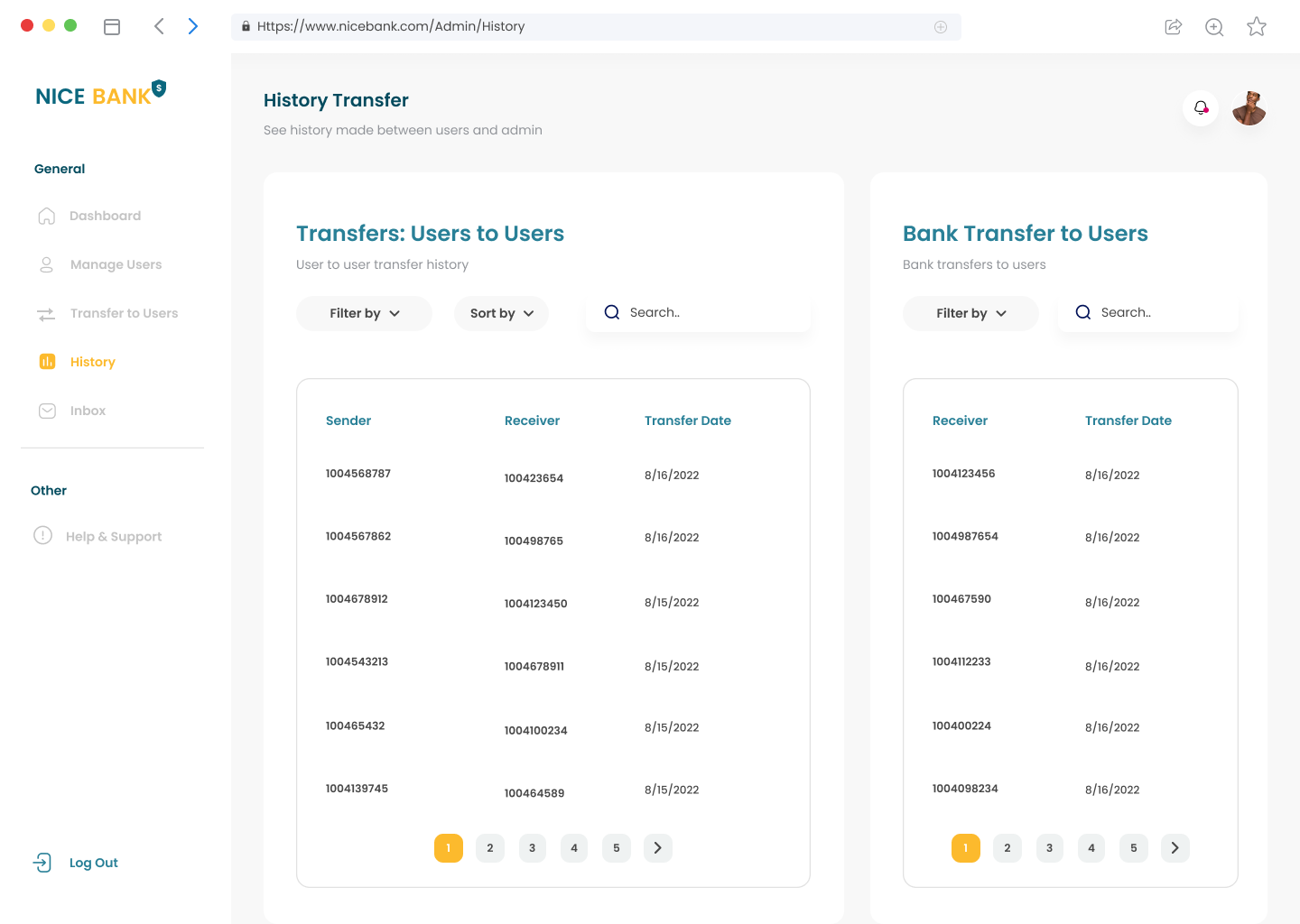
To initiate a transfer, the administrator typically begins by selecting the desired recipient and the transfer amount. The transfer to users page may include a feature that allows the administrator to select recipients based on various criteria, such as user type or account balance. Once the recipient has been selected, the administrator inputs the transfer amount into the designated input field. The transfer to users page may also include a feature that calculates any associated fees and displays the total amount to be transferred.
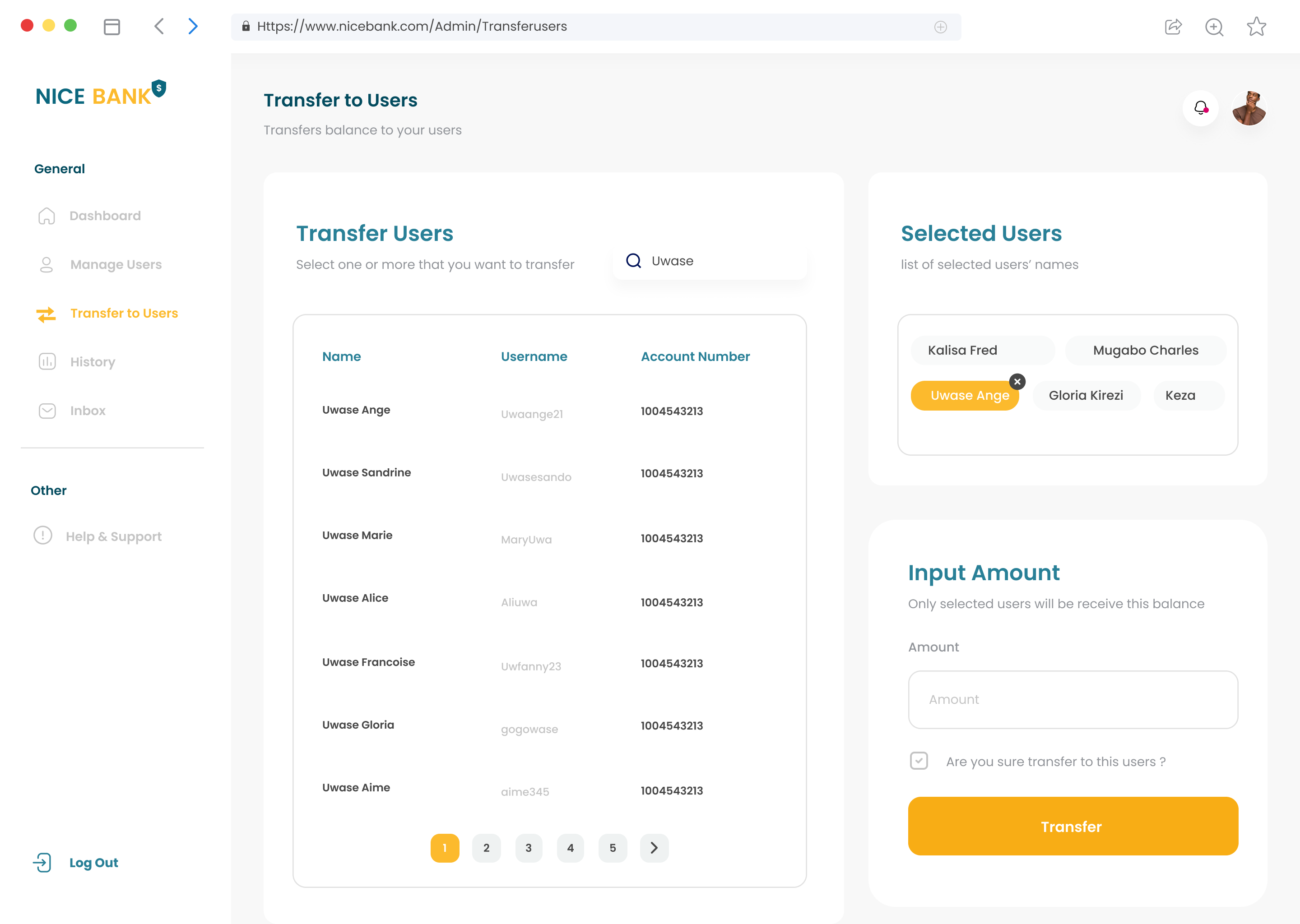
The admin manage users feature typically includes a list of all registered users within the payment platform. This list may include important user account information such as username, email address, account status, and account balance. The list of users may be sorted and filtered based on various criteria, such as account balance or account type. This allows administrators to easily identify users who require attention or action, such as those with low balances or inactive accounts.
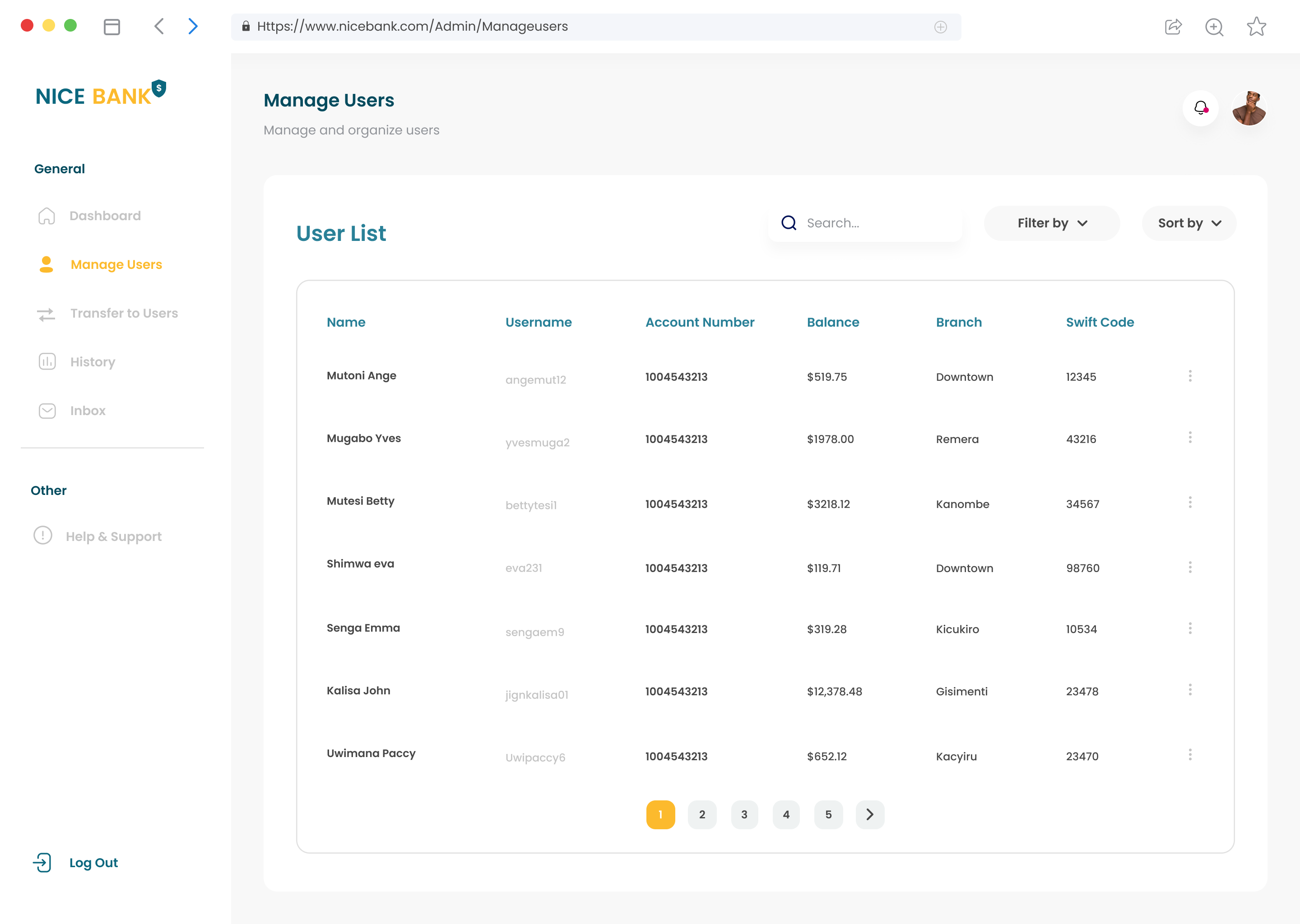
In conclusion, the bank dashboard design is a comprehensive and user-friendly tool for managing financial transactions within a banking platform. It includes features such as account summaries, transfer histories, user management, and account security options. The dashboard is designed to be intuitive and easy to use, providing users with a streamlined and efficient experience. Overall, the bank dashboard design is an essential tool for banking institutions looking to provide their customers with a modern and user-friendly way to manage their financial transactions.
